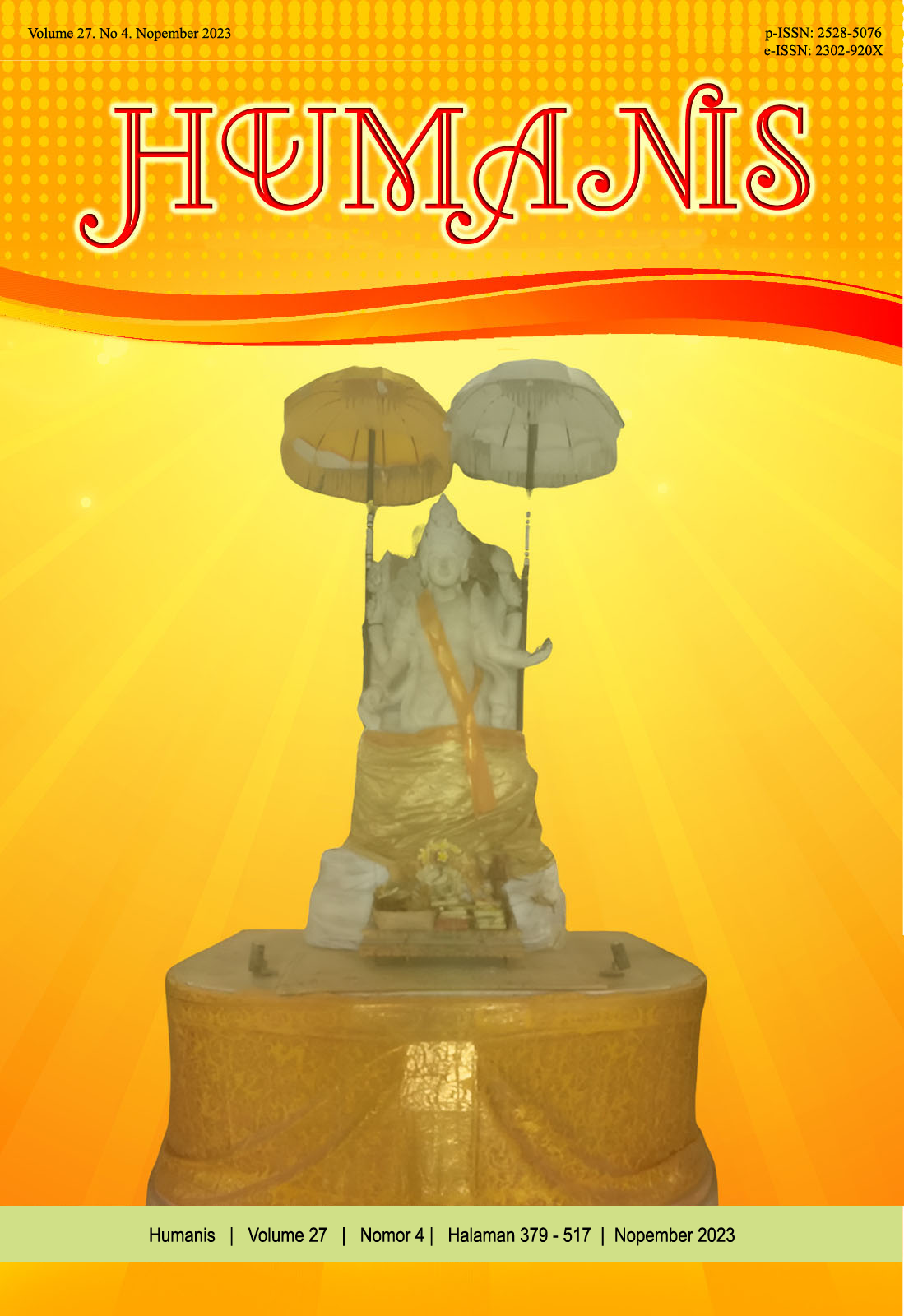The Verbal Irony found in English Novel “Twilight”
Abstract
Talking irony as one of the figures of speech has been commonly discussed not only in daily conversation but also in social media, contemporary fiction, and different works of literature. However, the study of irony itself is not widely discussed in the novel. This study aims to find the verbal irony that occurs in the novel and in what situations it occurs. The data were taken from the novel “Twilight” written by Stephenie Meyer. The theory is adapted from Winokur (2007) about the definition of verbal irony. This study uses a qualitative approach and data are collected by note-taking and classified into the types of irony. The findings of this study, there are 14 data of verbal irony occur in this study. This study also found that the ironic criticism in the novel appears to minimize the negative meaning of the message. So, it may reduce the level of criticism for the addressee to save face. Explaining Verbal Irony in the Novel is really different from what we communicate in real situations. We have to read the whole text to find the implicit meaning of the irony. For the next study, we can analyze the comparison between irony and humor in literary work, such as novels to have more sight into those signals.
Downloads
References
Baldó, Rosa María Pacheco. (2022). “Metaphor and Irony on Reviews for Spanish and American Prisons.” International Journal of Society, Culture and Language 10 (1): 1–14. https://doi.org/10.22034/ijscl.2022.539054.2377.
Cignarella, A.T., Sanguinetti, M., Bosco, C., Ros, Paolo. (2020). Marking Irony Activators in a Universal Dependencies Treebank: The Case of an Italian Twitter Corpus. In Proceedings of the 12th Conference on Language Resources and Evaluation (LREC 2020).
Colebrook, Claire. (2004). Irony. Paper Knowledge. Toward a Media History of Documents.
Ghanem, Bilal, Jihen Karoui, Farah Benamara, Paolo Rosso, and Véronique Moriceau. (2020). “Irony Detection in a Multilingual Context.” In European Conference on Information Retrieval, ECIR, 12036 LNCS:141–49. https://doi.org/10.1007/978-3-030-45442-5_18.
Gibbs Jr, Raymond W., and Herbert L Colston. (2007). Irony in Language and Thought. Irony in Language and Thought. https://doi.org/10.4324/9781410616685.
Hornby, A.S. (2000). Oxford Advanced Learner’s Dictionary. Oxford: Oxford University Press
Jiang, Shengyi, Chuwei Chen, Nankai Lin, Zhuolin Chen, and Jinyi Chen. (2021). “Irony Detection in the Portuguese Language Using Bert.” CEUR Workshop Proceedings 2943: 891–97.
Khamdamovna, Mavlonova Ugiloy. (2021). Irony in Lyrics. European Journal of Research Development and Sustainability (EJRDS), 2 (4)
Khamdamovna, Mavlonova Ugiloy, and Makhmurova Mavjuda Khalimovna. (2000). “Impact Factor : International Scientific Journal Theoretical & Applied Science The Effect of Diversity of The Nationality, Board Of Director, Investment Decision, Financing Decision, And Impact Factor :” Theoretical & Applied Science 4 (84): 362–64. https://doi.org/10.15863/TAS.2020.04.84.63.
Kwon, Winston., Clarke, Ian., Vaara, Eero., Mackay, Rowan., Wodak, Ruth. (2020). Using Verbal Irony to Move on with Controversial Issues. Organization Science, 1-22.
Nayel, Hamada A., Walaa Medhat, and Metwally Rashad. (2019). “Improving Irony Detection in Arabic Tweets Using Ensemble Approach.” In FIRE.
Ortega-Bueno, Reynier, Francisco Rangel, Delia Irazú Hernández Farías, Paolo Rosso, Manuel Montes-Y-Gómez, and José E. Medina-Pagola. (2019). “Overview of the Task on Irony Detection in Spanish Variants.” In Proceedings of the Iberian Languages Evaluation Forum (IberLEF).
Potamias, Rolandos Alexandros, Georgios Siolas, and Andreas Georgios Stafylopatis. (2020). “A Transformer-Based Approach to Irony and Sarcasm Detection.” Neural Computing and Applications 32 (23): 17309–20. https://doi.org/10.1007/s00521-020-05102-3.
Ritschel, Hannes, Ilhan Asian, David Sedlbauer, and Elisabeth André. (2019). “Irony Man: Augmenting a Social Robot with the Ability to Use Irony in Multimodal Communication with Humans: Socially Interactive Agents Track.” In Proceedings of the International Joint Conference on Autonomous Agents and Multiagent Systems, AAMAS.
Sykora, Martin, Suzanne Elayan, and Thomas W. Jackson. (2020). “A Qualitative Analysis of Sarcasm, Irony and Related #hashtags on Twitter.” Big Data and Society 7 (2). https://doi.org/10.1177/2053951720972735.
Winokur, Jon. n.d. “The Big Book of Irony.”. (2007). NewYork: St. Martin’s Press.
Woodend, Kyle. (2019). “Irony, Narcissism, and Affect in David Foster Wallace’s Infinite Jest.” Critique - Studies in Contemporary Fiction 60 (4): 462–74. https://doi.org/10.1080/00111619.2019.1596876.


















